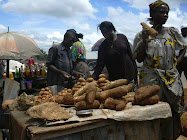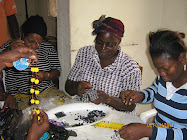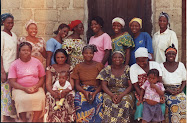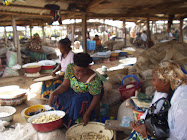How a Village Saved Its Fishery: "A tiny Muslim village in Thailand revived its mangrove trees and brought back its shrinking fish population...." (focus is not on their religion but on their community).
In a tiny Muslim fishing village called Tamarind Cape, a mangrove swamp has been reborn.
Twenty-five years ago it was almost gone. Because Mangrove charcoal is prized across Southeast Asia for its cooking properties, a Thai logging company was making quick use of Tamarind Cape's limited supply of wood. As the swamp that once split the village in two started to shrink, the fisherman began to notice something. Their catch was disappearing too.
"Ninety-seven percent of the 600 people who live here depend on the sea," said Babu Nyansee, a 74-year-old Imam and the village headman of Tamarind Cape. Babu and I were sitting on the banks of an estuary, staring out at surreal towers of limestone that jut suddenly out of the sea in this part of the Thailand. "As the mangroves disappeared, we began to realize that it was affecting the fishery; all the fish we eat come here to spawn. And many of the things they eat do too. So, slowly, we brought the ecosystem back with the help of Yadfon, an NGO based in Trang."
The old man spoke slowly and deliberately. Though small and rail thin, he projects considered strength, and as we talked it was clear he was speaking for everyone in his village. Babu is an unlikely conservationist, and a defender of this fishing village's interests.
The success of this small community in Tamarind Cape stands as a model for progress in Thailand's south, where polluting prawn and fish farms patchwork the coast, and many fishermen complain of emptying seas.
As we walked the muddy banks, balancing on palm fronds so as not to slip in the muck, he showed me a tool they're using here: small fish traps that float in the nutrient-rich current heading out of the swamp, where they also farm seaweed. "We used to just throw all our small fish away, or sell them for next to nothing. Now, we put them in these traps, and the grouper grow big and in a few months can sell for 150 baht ($4.50) each."
That's enough to feed a family for a few days.
Later, we cruised Babu's swamp in a longtail boat, past baroque tangles of mangrove roots. An osprey swooped over the river ahead of us, and Babu smiled and traced its path with his finger. It was a peaceful scene.
But just to the south, in the provinces that border Malaysia, a bloody, protracted war is being fought. This insurgency, which officially began in 2004 but has been fomenting for decades, has claimed over 3,500 lives in Thailand. Lately, there have been bombings and shootings in Pattani, Yala, and Narathiwas provinces almost daily, but the conflict gets very little international attention.
We were in Trang Province, a 45-minute drive north of the violence, but here ethnic Malay Muslims and Thai Buddhists appeared to live in relative harmony. I asked Babu why.
"In Trang, in my village at least, Muslims and Buddhists are like cousins. We join in each other's celebrations, we fish together, and we are all pretty satisfied with the role of our government. But in the deep south, people are dissatisfied with the lawmakers, and with human rights abuse on both sides. But there is another reason: The south is very poor. There is no work there, and there aren't that many fish."
To ease the suffering of his ethnic group in this war-torn area, Babu has invited several Muslim village heads to Mangrove Cape to study how to reintroduce these forested swamps. They are also encouraged to practice more sustainable models of fishing in their villages. "It's a small amount of people that we can affect," he admitted, "but a small change can make a difference."
There are many ethnic and political flashpoints in Thailand's southern insurgency, and it shows little sign of letting up. But as we cruised the mangroves, this Imam seemed to think that peace, too, might result from the rebirth of this misunderstood resource.
Thursday, December 3, 2009
Subscribe to:
Comments (Atom)







